39 4 chemical equations and stoichiometry worksheet answers
assignmentessays.comAssignment Essays - Best Custom Writing Services Get 24⁄7 customer support help when you place a homework help service order with us. We will guide you on how to place your essay help, proofreading and editing your draft – fixing the grammar, spelling, or formatting of your paper easily and cheaply. › blog › balancing-chemical-equationsBalancing Chemical Equations: Practice and Review | Albert.io Mar 08, 2022 · P 4 O 10 + 6 H 2 O → 4 H 3 PO 4. Balancing Chemical Equations Practice Problems. Try to balance these ten equations on your own, then check the answers below. They range in difficulty level, so don’t get discouraged if some of them seem too hard. Just remember to start with the element that shows up the least, and proceed from there.
› 1D-Kinematics-Answers1D Kinematics Review - with Answers - Physics Classroom changes its velocity from 0.0 mi/hr to 60.0 mi/hr in 4.20 seconds; accelerates from 33.4 m/s to 18.9 m/s over a distance of 109 m; Answer: See answers, explanations and calculations below. a. If the speed and direction of an object is constant, then the acceleration is 0 m/s 2. b. The acceleration is the velocity change per time ratio:
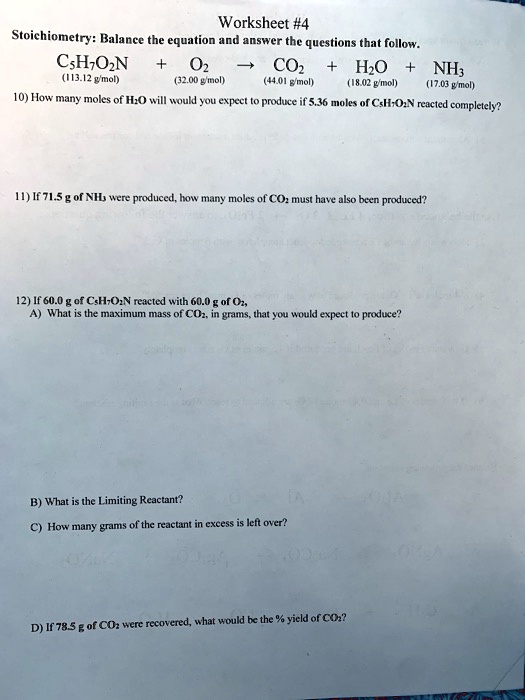
4 chemical equations and stoichiometry worksheet answers
› document › 347804509Unit Operations of Chemical Engineering 7th Edition PDF Figure 1.2 shows the simplest form of manometer. Assume that the shaded portion of the U tube is filled with liquid A having a density p, and that the arms of the U tube above the liquid are filled with fluid B having a density py. Fluid B is immiscible with liquid A and less dense than 4; itis often a gas such as air or nitrogen. wou.edu › chapter-6-quantities-chemical-reactionsChapter 6 – Quantities in Chemical Reactions – Chemistry 6.5 Mole-Mole Relationships in Chemical Reactions. In this section you will learn how to use a balanced chemical reaction to determine molar relationships between the substances. In Chapter 5, you learned to balance chemical equations by comparing the numbers of each type of atom in the reactants and products. softmath.com › math-com-calculator › radicalImaginary number homework calculator - softmath Basic simplifying expressions; worksheet, answers for math homework, grade 9 math algebra, ks3 sats paper download, bonding chemical equations, trigonometric chart, online math test y11. 3rd order algebraic expansion, how to cube root using a TI-82 calculator, online ti-84, integrated math problem bank mcDougal Littell, program to solve ...
4 chemical equations and stoichiometry worksheet answers. openstax.org › books › chemistry-2e4.1 Writing and Balancing Chemical Equations - OpenStax Balancing Equations. The chemical equation described in section 4.1 is balanced, meaning that equal numbers of atoms for each element involved in the reaction are represented on the reactant and product sides. This is a requirement the equation must satisfy to be consistent with the law of conservation of matter. softmath.com › math-com-calculator › radicalImaginary number homework calculator - softmath Basic simplifying expressions; worksheet, answers for math homework, grade 9 math algebra, ks3 sats paper download, bonding chemical equations, trigonometric chart, online math test y11. 3rd order algebraic expansion, how to cube root using a TI-82 calculator, online ti-84, integrated math problem bank mcDougal Littell, program to solve ... wou.edu › chapter-6-quantities-chemical-reactionsChapter 6 – Quantities in Chemical Reactions – Chemistry 6.5 Mole-Mole Relationships in Chemical Reactions. In this section you will learn how to use a balanced chemical reaction to determine molar relationships between the substances. In Chapter 5, you learned to balance chemical equations by comparing the numbers of each type of atom in the reactants and products. › document › 347804509Unit Operations of Chemical Engineering 7th Edition PDF Figure 1.2 shows the simplest form of manometer. Assume that the shaded portion of the U tube is filled with liquid A having a density p, and that the arms of the U tube above the liquid are filled with fluid B having a density py. Fluid B is immiscible with liquid A and less dense than 4; itis often a gas such as air or nitrogen.
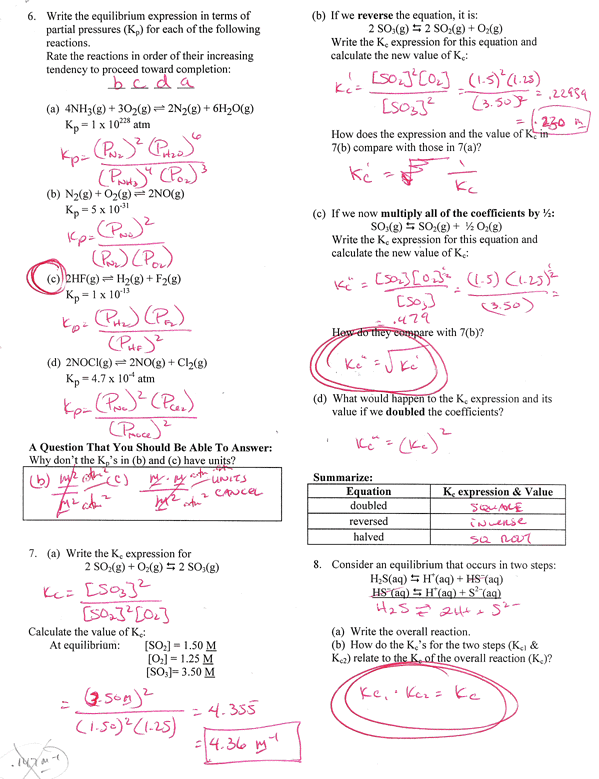



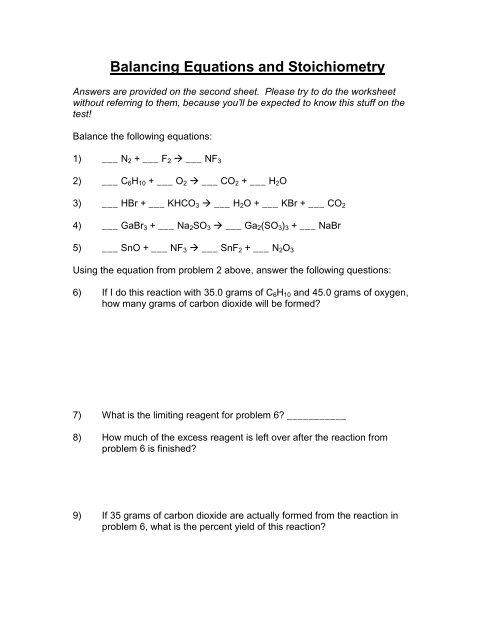



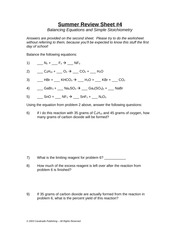


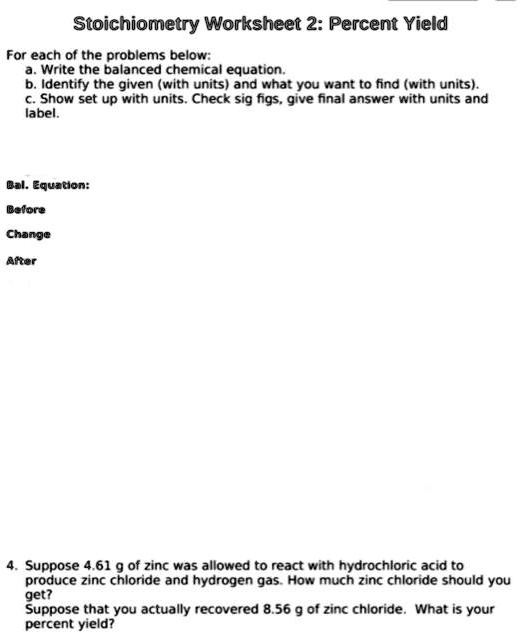

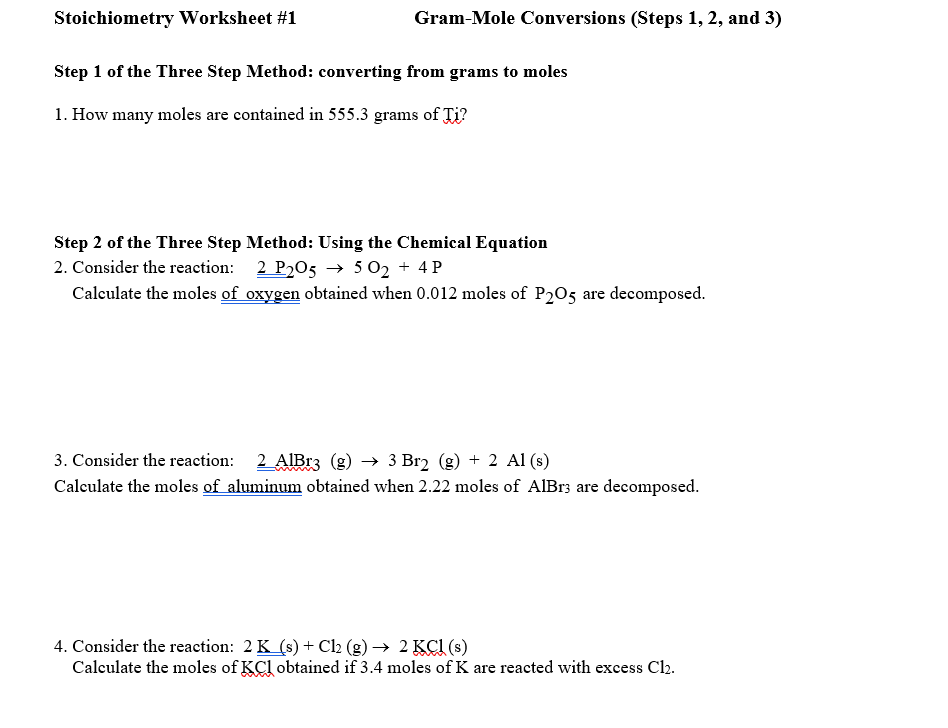
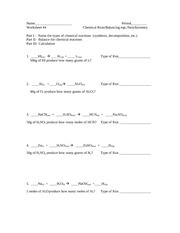
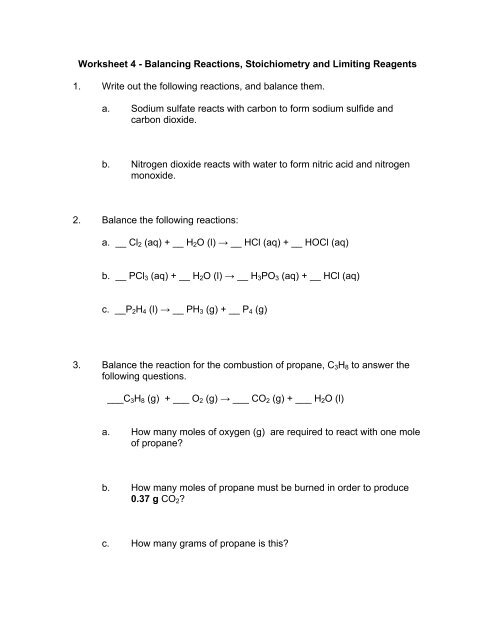


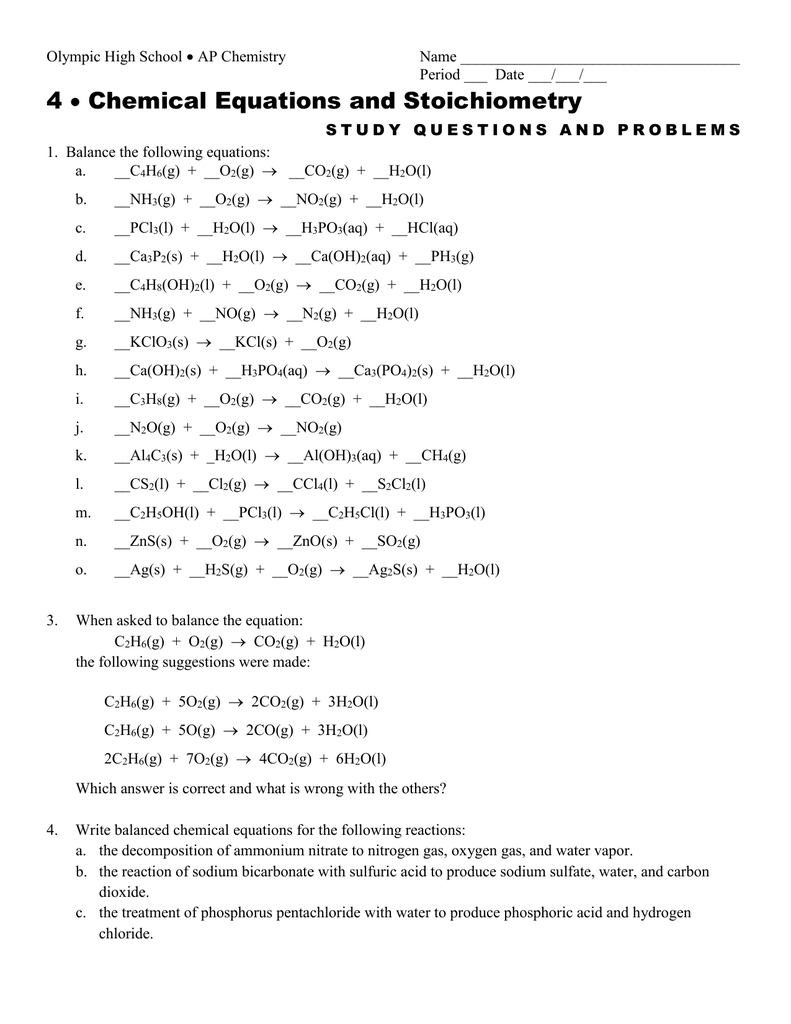

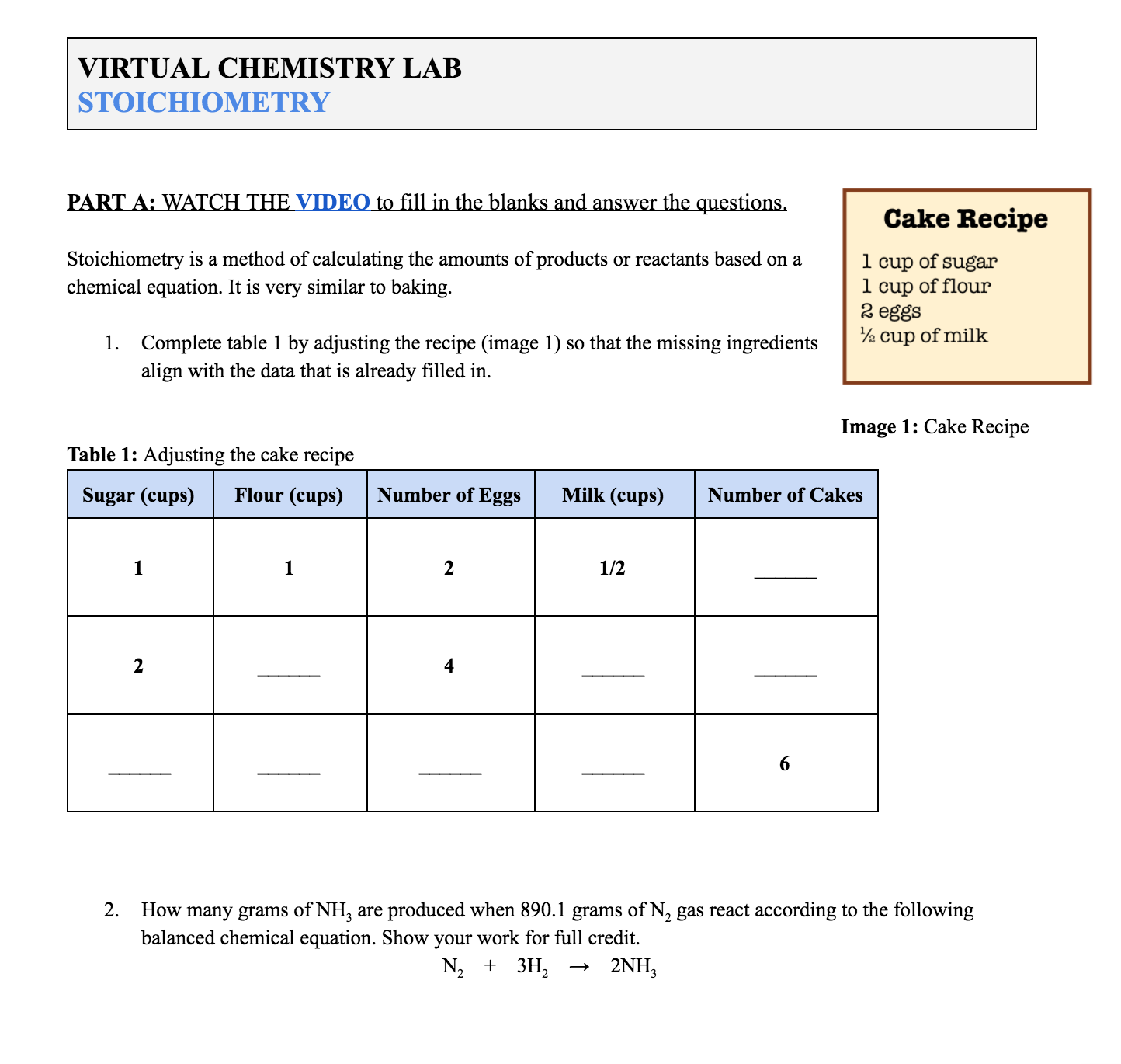


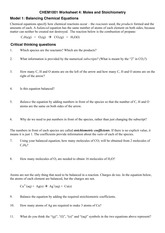



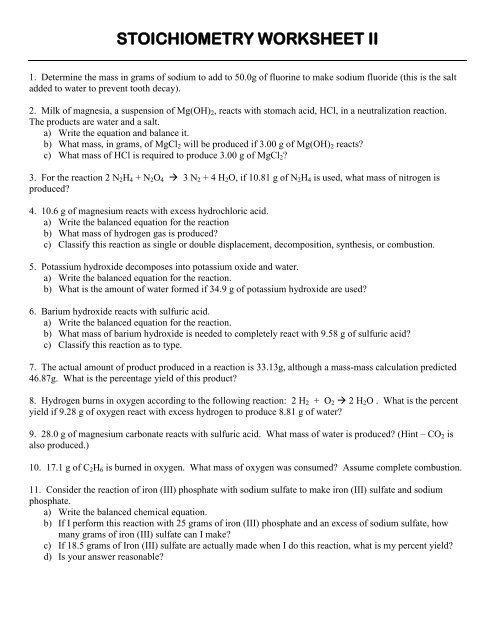
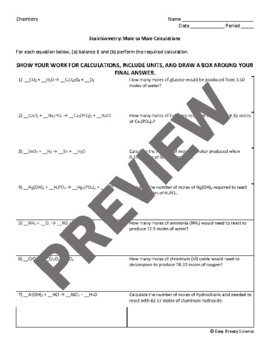


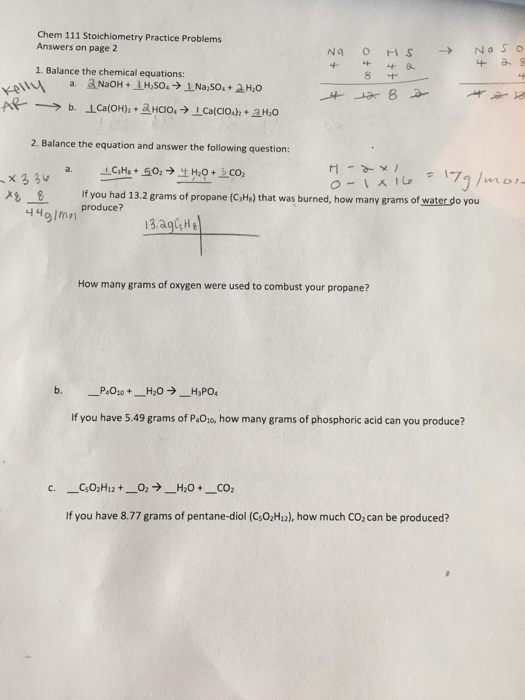
0 Response to "39 4 chemical equations and stoichiometry worksheet answers"
Post a Comment